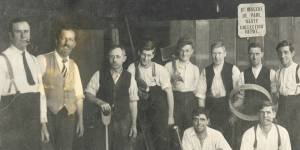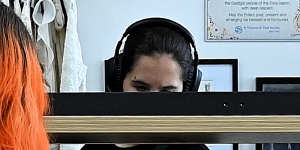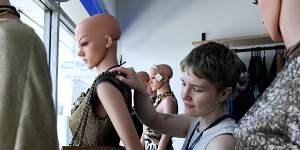But when the Society of St Vincent de Paul opened its first store for second-hand goods,on Newtown’s King Street in 1922,a bit of dirt didn’t seem to be a problem.
“It was called a ‘waste collection bureau’,and they sold all manner of things that were considered waste – even manure,” Yolanda Saiz,executive director of commercial enterprise at Vinnies NSW,said of the organisation’s first op shop.

The Vinnies Newtown ‘waste collection bureau’ in 1922.Supplied
In the years that followed,the society opened another store in nearby Petersham,then in Brisbane. One hundred years – and a few donation guidelines – later,there are more than 600 Vinnies stores across Australia.
“That philosophy of reusing items rather than discarding them,of a circular economy,it was all very innovative for the time,” Saiz said.
To celebrate the centenary of its first store,from Monday,100 new designer pieces,donated by Australian brands including Ellery,KITX and Lee Mathews,will be hidden in the organisation’s charity shops across NSW.
Anyone shopping before November 6 will also enter a draw to win a number of donated items,including an $8000 vintage Chanel bag.

The Newtown Vinnies store today.Kate Geraghty
Vinnies Newtown’s waste collection bureau came after the society had fundraised through similar operations in London and the US.
In her 2019 bookNothing New,a history of op shops in Australia,researcher Robyn Annear detailed how the stores filled a gap left by the Salvation Army,which had started to establish “salvage” services but stopped its operations during the First World War.
The first week of donations at Vinnies Newtown included “a cartload of furniture,another of timber and glass from a demolished building,a wire dummy such as is used by dressmakers,a bath,and a couple of wash-tubs”.
Then there was the manure. Although Annear maintains it was likely slightly less pungent than it appears on paper.

Bianca Hartman hangs a chanel bag on a mannequin in the Newtown Vinnie’s store.Kate Geraghty
“The ‘manure’ was actually dirt swept off the streets that could be used to help crops grow – it was to be used to manure crops,rather than actual poo,” she said.
For Annear,the rise of op shops in the mid-20th century encapsulates the transition between two ways of thinking about clothes:‘waste not want not’ and the rise of rapidly changing trends.
“That there was ‘no such thing as waste’ was very much the 19th-century way of doing things. Even by the time we had the first op shops opening in Sydney and Melbourne,that was starting to change,” she said,noting media coverage of the first “opportunity shop” in Fitzroy in 1925 where there were wealthy women donating their clothes,local working-class women and then middle-class women who had travelled to look for a bargain on a newer style.
“It was the advent of consumerism as we know it,and fashion;fashion as a living,changing thing for people,so it needed to be an affordable thing for people.”
Saiz said the tradition of finding a treasure you could not otherwise afford was still alive and well in the city’s op shops.
“Every social event I go to,someone has a Vinnies story. They say,‘Oh,I found a Burberry bag for $16’,” she said.
While the organisation remains committed to providing second-hand items at lower prices for people in need,Saiz said an increasing proportion of sales – including on its eBay store,started in response to pandemic retail restrictions – were to people shopping second-hand for environmental reasons.
“The face of our customer is changing. People are shopping here because they believe in slow fashion,” she said.
The Morning Edition newsletter is our guide to the day’s most important and interesting stories,analysis and insights..